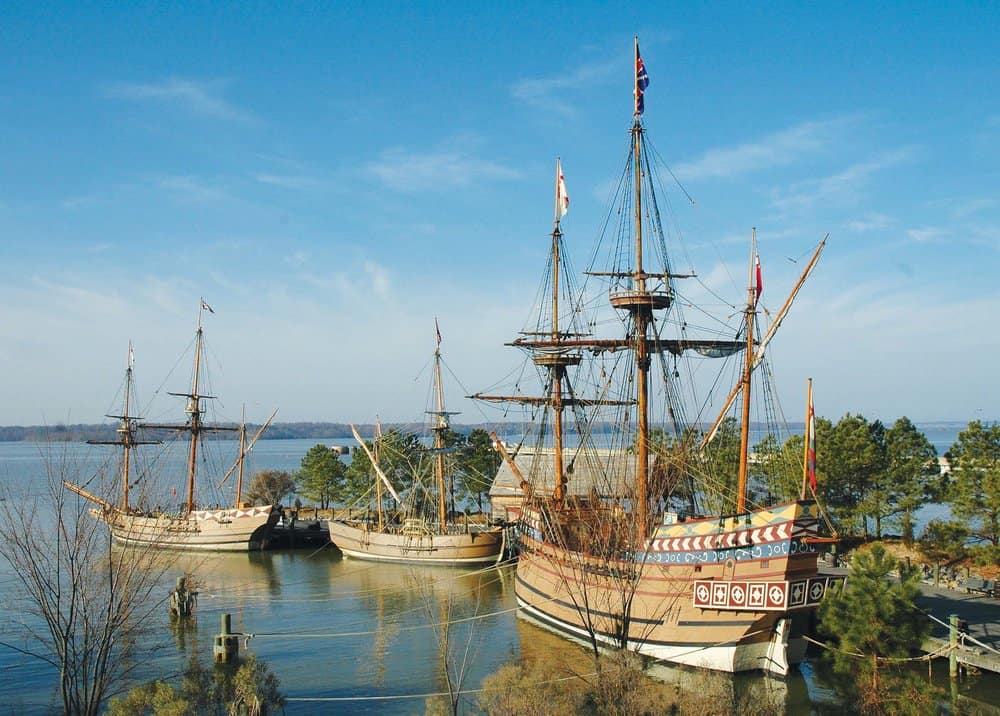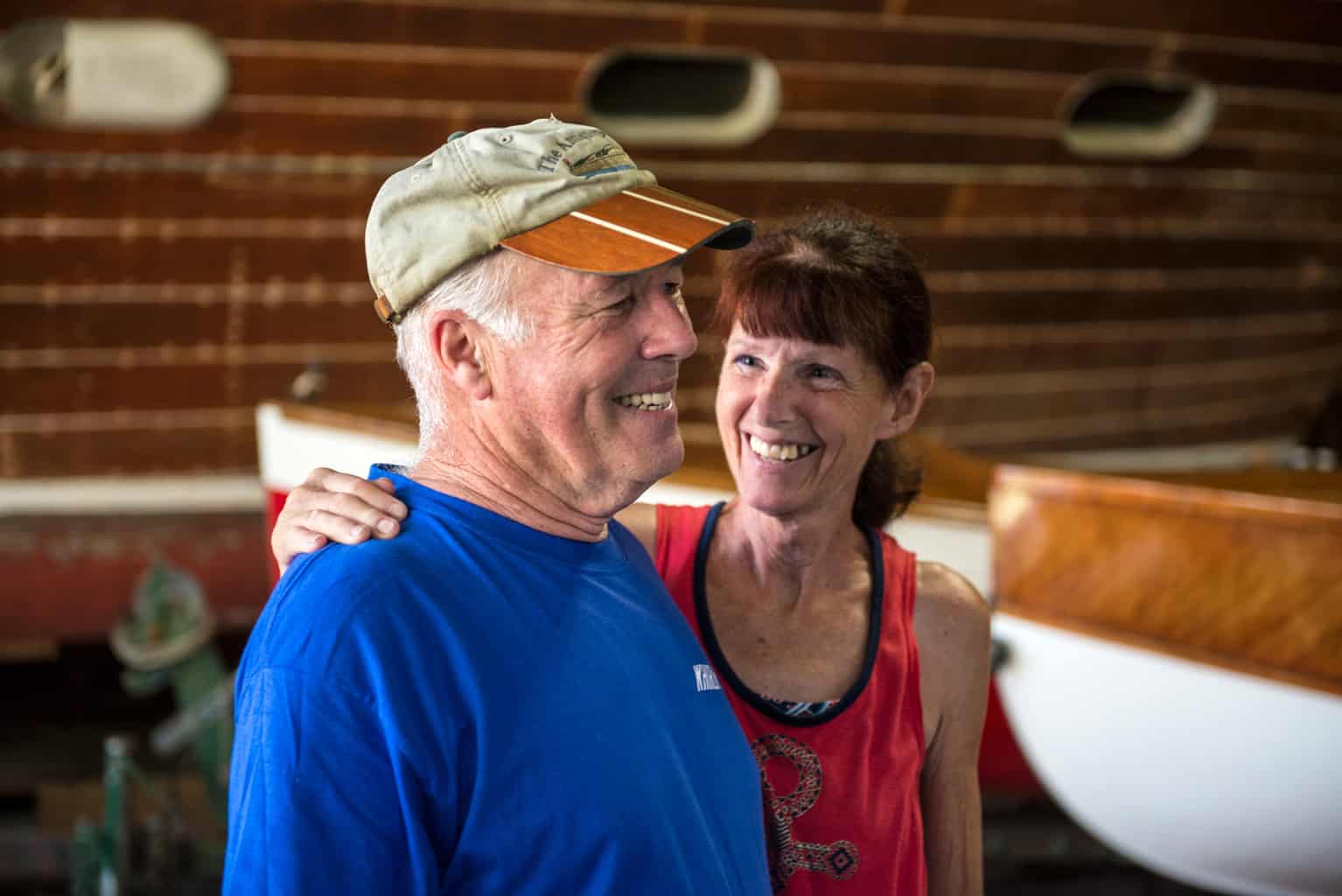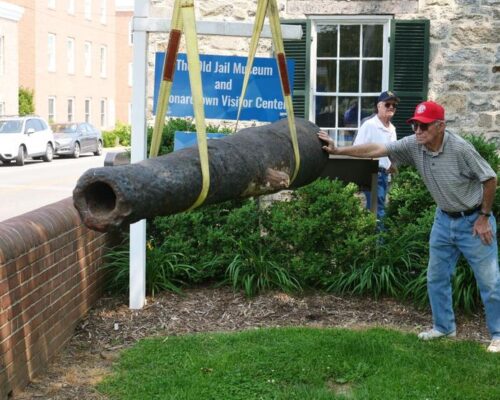Come aboard with the Jamestown Settlement crew.
“Make ready to wear the ship!” barks First Mate Hank Moseley, and the volunteer crew snaps into action, bringing Godspeed’s high stern through the wind. Captain Eric Speth is at the tiller, guiding his ship back and forth on the James River.
Godspeed and two other 17th century-era replica ships at the Jamestown Settlement are an integral part of the living history museum. Every year, thousands of Virginia’s fourth-graders travel to Jamestown to learn about the early settlers. They visit the Powhatan Village and explore the recreated settlers’ fort. A highlight of the field trip includes stepping aboard the ships, docked stem to stern along the pier. There, deckhands clad in hand-sewn linen britches and sailors worming and parceling the shrouds patiently explain their duties.
Although the ships are frequently docked, they were designed to be sailing classrooms. During the warmer months, Godspeed (the middle-sized boat of the trio and the one easiest to maneuver) sails Virginia’s waters, visiting events like Norfolk’s Harborfest, the Turkey Shoot Regatta in Irvington and Urbanna’s Oyster Festival.
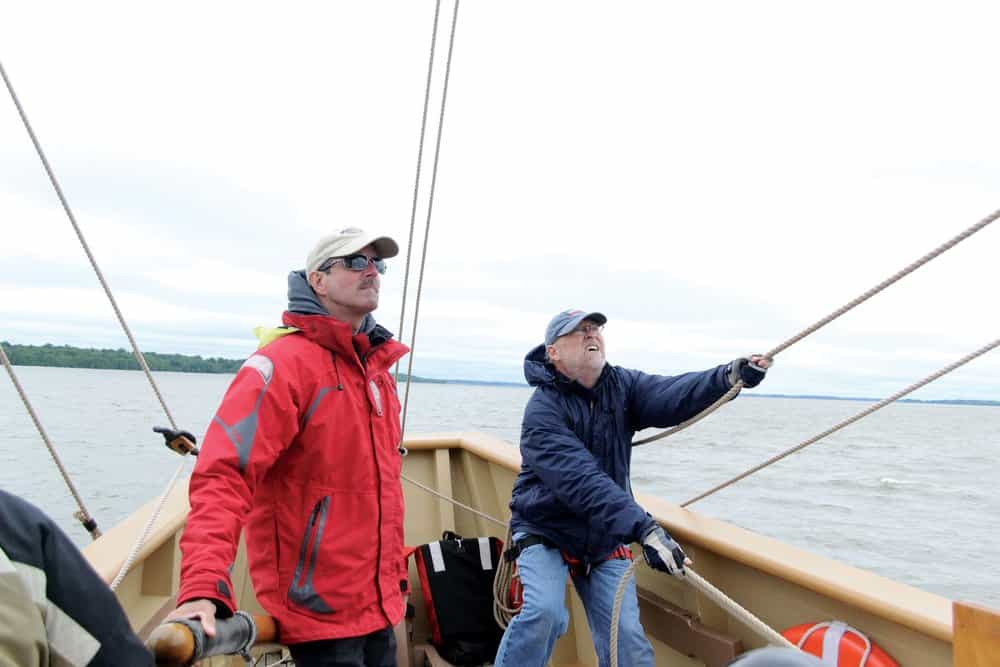
On the spring training sail, the experienced crew trains newbies to belay the starboard brace, while other neophytes work the port lines. “We work together like a well-choreographed dance,” says veteran volunteer Jake Kirchner of Williamsburg, Va. “And over time, we just get better and better.”
When he retired more than a decade ago, Kirchner traded decades as a journalist and writer for the job of deckhand. With more than 8,000 hours logged during the past 12 years, Kirchner is a pro at heaving lines, bracing the yards, and wearing his historical attire with style. This is his reward for the many winter hours he’s spent sanding, and sanding, and sanding.
“Our volunteers collectively give more than ten thousand hours each year to maintain these ships,” says Speth. “It’s very satisfying to work with such a dedicated crew, both on the water and on the hard. We couldn’t fulfill our mission without them.”
It’s a mission Speth undertook long before the keels were laid for the three replica ships he now captains. Godspeed was built in 2006 along with a sister ship, Discovery. The Susan Constant is the oldest, pre-dating them by 15 years, but they hearken back to the first ships that brought English settlers to the colonies. As the Foundation’s maritime program manager, Speth had a hand in every aspect of the ships’ building, from hiring a timber buyer in Guyana to locate the tropical hardwoods to tramping through the Cascade Mountains searching for the right Douglas fir for Susan Constant’s mainmast.
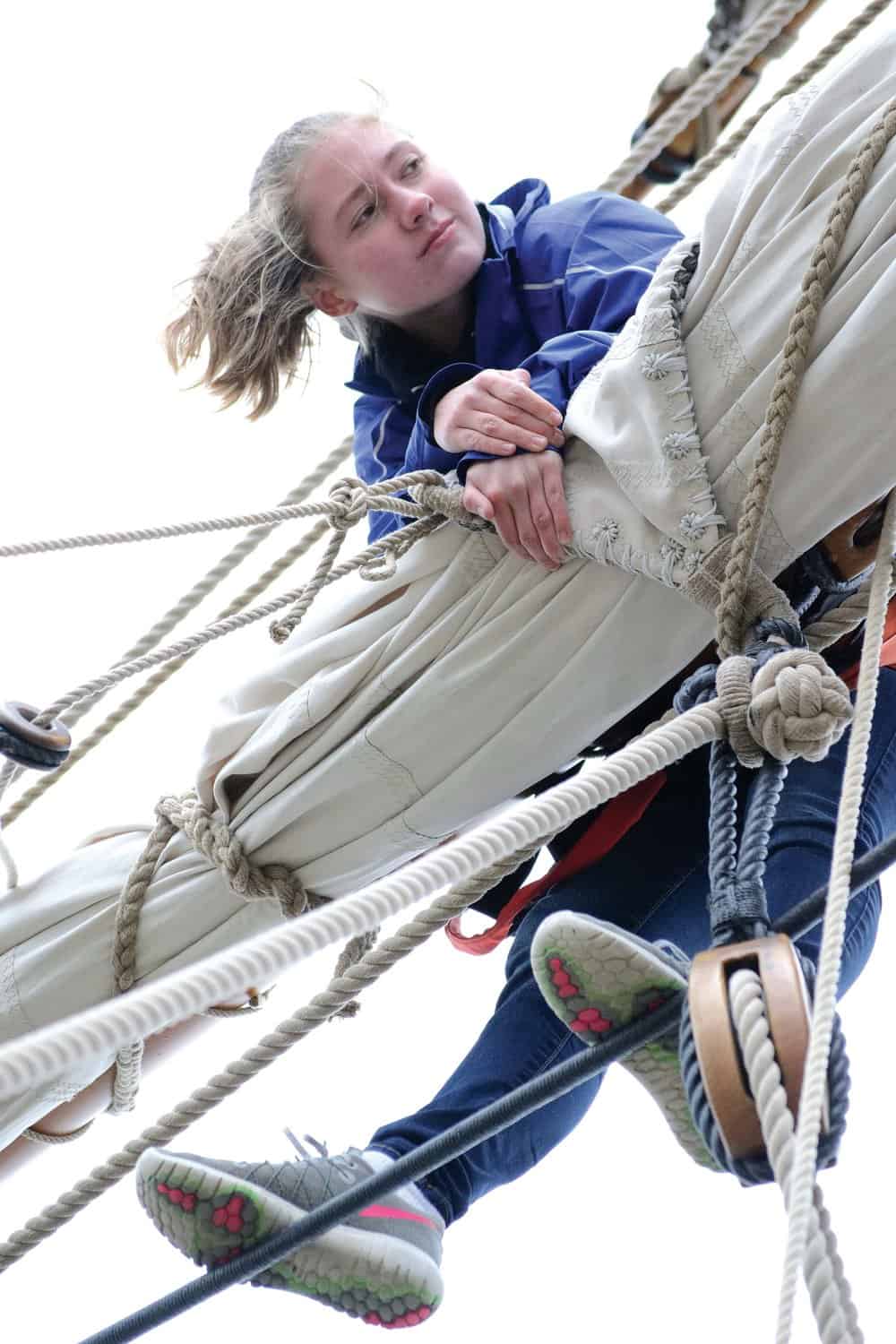
This training cruise is special for Anna Hower. She has climbed the rigging before, but at the dock. This is her chance to do the real thing underway. The high school senior from Williamsburg has been working with the Foundation since she was 13. She first trained as a Native American docent, serving as an historical interpreter in the Powhatan Village. After turning 16, she applied for a summer job and now gets paid to do what she loves, she explains. “I love history and showing how history is important to people today.”
Hower’s family has a fishing boat, but this is her first real sailing experience. “I hope I can crew on longer sails in the future, visiting ports where I can interact with the public,” she says. “Interpreting is different from actually doing. Learning how it’s done makes sharing the experiences of the early settlers really come alive.”
“We try to stay authentic year-round and use centuries-old techniques and mechanical advantage,” explains Speth. For example, to remove Susan Constant’s mainyard, the crew rigged a traditional block and tackle (pronounced “tay-kel”) and used lots of muscle. One concession to modernity: “Instead of tying the lines off to an ox, we used a Toyota Tacoma this year to make sure the yard didn’t come crashing down when we lowered it,” says Moseley, the first mate.
At this year’s May 12 Jamestown Day celebration, the Discovery, the smallest of the ships, will set sail. She’ll give those on shore a thrill and her crew some on-the water experience, a welcome reward for the long months of winter work. Later in the summer, Godspeed and her crew will attend Harborfest in Norfolk again and other events in Virginia. This fall, Speth hopes to sail north in the Chesapeake, visiting locations in Maryland and sharing his floating, sailing museum with as many people as possible.
Volunteer Russ Sage, of Carrollton, Virginia, was a schoolboy in 1957 when he stepped on board the first replica of Susan Constant. “Serving on this ship is a dream come true,” he says. Sage says that the camaraderie among the crew makes all the work during the off season worthwhile. And when in costume, he enjoys talking to the kids, just as crew members talked with him more than 60 years ago. “When the public is on board, we speak for the ship,” he explains.
Sage spent his professional life working as a civilian on navy vessels at Newport News Shipbuilding. “There’s a lot of technical expertise needed to sail a wooden ship, as well as a nuclear submarine,” he notes. “Volunteering at the Foundation is 95 percent sweat, five percent sailing. Wooden ships are jealous and demanding.”
Karen and David Soule sail their Ericson 38 Soulmate out of Fishing Bay Yacht Club in Deltaville.

